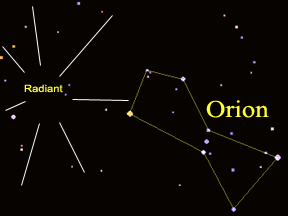Big, Bigger, Biggest
Although the Sun looks small from Earth, it is really much, much bigger than our planet (and any other planet in the solar system). The Earth is actually one of the smaller planets compared to the giant planets in the outer solar system - Jupiter, Saturn, Uranus, and Neptune. The table below lists the diameters of the planets and the Sun compared to the Earth.
| |
How Big Are They Compared to Earth? |
| Sun |
109 times larger than Earth! |
| Mercury |
Less than half the size of Earth |
| Venus |
About the same size as Earth |
| Mars |
About half the size of Earth |
| Jupiter |
More than 11 times larger than Earth |
| Saturn |
More than 9 times larger than Earth |
| Uranus |
About 4 times larger than Earth |
| Neptune |
A little less than 4 times larger than
Earth |
| Pluto |
The smallest planet! Only one-fifth the size of Earth. |
Last modified January 5, 2004 by Lisa Gardiner.
You might also be interested in:

Scientists believe that the solar system was formed when a cloud of gas and dust in space was disturbed, maybe by the expl osion of a nearby star (called a supernova). This explosion made waves in space
...more
The solar system is made up of the Sun, the // Call the planets count function defined in the document head print_planet_count('planets'); planets and // Call the planets count function defined in the
...more
Eris is a dwarf planet in our Solar System. Eris is a lot like Pluto, which is also a dwarf planet. Eris and Pluto are both very far from the Sun. They are both very, very cold. Eris was discovered in
...more
Do you know what a planet is? Guess what... astronomers are not quite sure what a planet is! Mercury, Venus, Earth, and Mars are the planets closest to the Sun. They are definitely all planets. They are
...more
Meteor showers are times when you can see a lot of meteors in one night. There are several different meteor showers. Each meteor shower happens at the same time every year. There is a meteor shower in
...more
The Leonid meteor shower is one of several major meteor showers that occur on roughly the same date each year. The Leonids typically "peak" (are at their greatest level of activity) in mid to late November.
...more
A meteor shower is an astronomical event during which many meteors can be seen in a short period of time. Most meteor showers have a peak activity period that lasts between several hours and a couple of
...more













